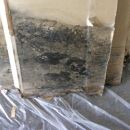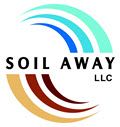
Basement Mold Remediation: Removing Mold the Right Way
When you discover mold in the basement, you want to deal with it the right way. There are several DIY methods out there. How do you know which one works? Do you even want to tackle the project yourself? When is it best to call in a mold remediation professional? These are all great questions to consider when dealing with a basement mold remediation issue.
Dealing with the Source of Mold
One of the first issues to address is the cause of the mold. Amongst other things, mold needs moisture to grow and thrive. If you have visible mold in your basement, you must have excessive moisture. Try to figure out where that moisture is coming from and fix that situation! Is there a crack in the foundation which is leaking? Pipes bursts or slow leaks are another common source of moisture in basements. Was there a ground water flood or perhaps an appliance failure? Hot-water tanks break and washing machines overflow. This can lead to water damage. Lastly, monitor the humidity levels in your basement. Elevated relative humidity (greater than 50%) for excessive time periods can lead to mold growth in a basement. Perhaps a dehumidifier would do the trick in managing the excessive moisture content in the basement.
Take Precautions to Prevent Cross Contamination Before You Begin
Mold spores can transfer through the air during removal, particularly if the HVAC system is on, contaminating other areas of the home. Turning off the heat and air conditioning and setting up an air purifier before you begin the process of removing the mold can help to reduce this risk.
Setup physical containment of the affected space. You don’t want to accidentally transport mold spores from the affected space to unaffected areas. Hanging plastic sheathing between affected and non-affected areas is a wise strategy. Also, plan your entry and exits with care. Areas that are used for transit in and out of the workspace may become contaminated. What can you do in those spaces to minimize cross contamination?
Killing versus Removing the Mold
If you are researching DIY mold remediation techniques online, you are likely finding a lot of different methods and products. You will find controversies between the use of bleach, over the counter products from home improvement stores, and more natural remedies – such as vinegar. There are no lack of opinions or proposed solutions. The biggest concept you need to understand is that of killing mold versus removing mold.
Mold removal is the proper concept and methodology when it comes to mold remediation. Killing mold is not enough, as remnants of the spores are left behind. You want them gone, thus removal. Mold removal can be achieved in several fashions: wet wiping the surface, HEPA vacuuming, media blasting or just old fashion disposal of affected material or items. Every situation should be addressed case-by-case with the understanding that the goal is mold removal, not just killing it.
Calling in a basement mold remediation professional
If you are overwhelmed by the mold issue in your basement, perhaps it is best to call a professional remediation contractor. These firms have trained professionals, commercial equipment and cleaning techniques to most effectively address your concerns. A reputable remediation contractor will also recommend pre and post project mold testing to ensure their work has been done correctly. This gives you peace of mind that the mold issue has been addressed.
The team at Soil-Away is skilled at removing mold. For professional help with mold remediation, contact Soil-Away at 603-641-6555.

